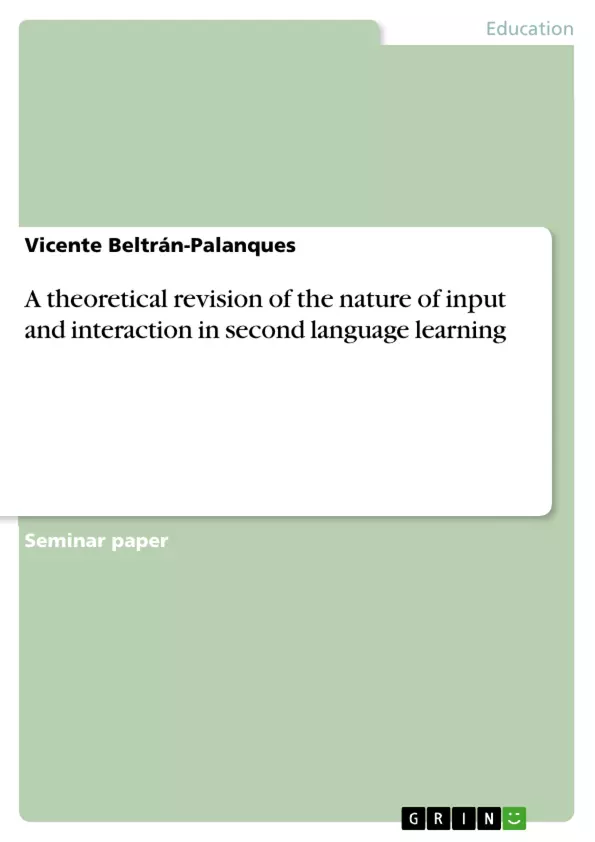The aim of this paper is to provide a general overview of the role of input and interaction in SL learning as well as the some of the major features related to the linguistic adjustments that might be done. Finally, the paradigm of focus on meaning, focus on forms focus on form will be discussed from a theoretical viewpoint.
Table of Contents
- Introduction
- The role of input and interaction
- Input hypothesis
- Interaction hypothesis
Objectives and Key Themes
This paper aims to provide a comprehensive overview of the role of input and interaction in second language learning. It explores different theoretical perspectives on how learners acquire language, specifically focusing on the importance of comprehensible input and interactional adjustments.
- The role of input in second language acquisition (SLA)
- Krashen's input hypothesis and its limitations
- Long's interaction hypothesis and the importance of negotiation of meaning
- The relationship between input, interaction, and comprehensible output
- The focus on meaning, focus on forms, and focus on form perspectives in language teaching
Chapter Summaries
Introduction
This chapter introduces the topic of second language acquisition (SLA) and highlights the diverse perspectives on how language is learned, including psychological and social approaches. It emphasizes the importance of input in SL development, discussing the contributions of Krashen's input hypothesis and Long's interaction hypothesis. The chapter concludes by briefly outlining the paper's focus on the role of input and interaction in SL learning.
The role of input and interaction
Input hypothesis
This section delves into Krashen's input hypothesis, emphasizing the need for comprehensible input that is slightly beyond the learner's current proficiency level (i+1). It discusses Krashen's argument that learners can understand input through contextual and extralinguistic information. Additionally, it explores criticisms of the input hypothesis, highlighting the perspectives of researchers like White and Swain who argue for the importance of incomprehensible input and comprehensible output, respectively.
Interaction hypothesis
This section explores Long's interaction hypothesis, which posits that learners need opportunities to interact and negotiate meaning to achieve comprehensible input. It emphasizes the role of interactional adjustments, including pre-modified input and interactionally modified input, in facilitating language learning. The chapter highlights the contributions of other researchers who support the value of interaction in SLA, emphasizing the need for learners to identify problems in their interlanguage and engage in conversational exchanges.
Keywords
The main keywords and focus topics of this text include second language acquisition (SLA), comprehensible input, interaction hypothesis, negotiation of meaning, linguistic adjustments, focus on meaning, focus on forms, and focus on form. These concepts are central to understanding the theoretical frameworks discussed in the paper.
- Quote paper
- Ph.D. Student Vicente Beltrán-Palanques (Author), 2013, A theoretical revision of the nature of input and interaction in second language learning, Munich, GRIN Verlag, https://www.grin.com/document/214502



